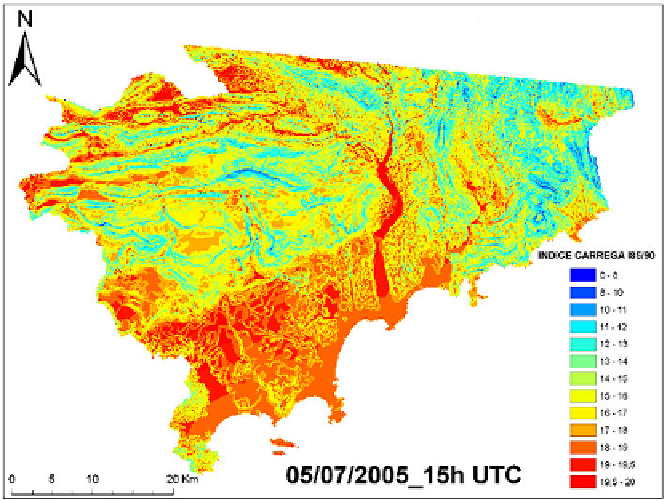Geoscience Reference
In-Depth Information
Figure 8.16.
Calculation of the meteorological risk index known as Carrega I85/90,
on July 5, 2005 at 15:00 UTC.. The index is generated directly.
Source: [CAR 07] (see color section)
8.3.3.5.
A short summary of the two different methods
Applying the process of kriging to the wind favors the creation of spatial areas
whose gradient is not as steep as the gradient associated with the process of
environmental regression. The process of environmental regression varies the risk
index as far as the topography of the Earth's surface is concerned. This is an
advantage with a thermal breeze regime in which the relief of an area play an
important role. But, on July 5, the local effects of the wind gave way to a general
flow, which led to the creation of a more homogenous spatial wind field due to the
fact that large advection currents and the strong wind that is associated with such
currents removed any local factors that might, otherwise, influence the wind.
If we take the example recorded on July 5, 2005 into consideration, the
department of the Alpes-Maritimes in southeastern France could have experienced a
potentially catastrophic forest fire due to the strong westerly Foehn winds (see
earlier in this section), which started in the west of the region and became more
widespread during the day with a hot, dry air, and a strong levels of solar radiation
and high wind. This type of weather is particularly dangerous in summer (and more
uncommon than in winter) , especially with the very low levels that water in the soil
may reach (sometimes 5% of their maximum potential). However, there was more
water present in the water reserves of the soil in the beginning of the summer in
2005.










